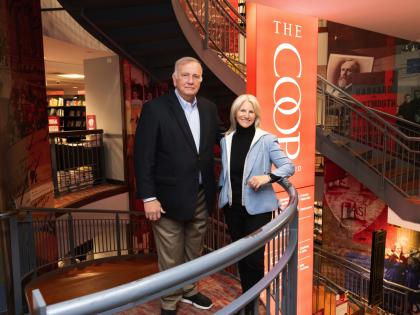Dean Michael D. Smith discussed his draft annual message with Faculty of Arts and Sciences (FAS) colleagues at their first meeting of the year on October 4. Among the notable points:
- FAS reduced its unrestricted core deficit from a projected $35 million to an actual $16 million during the fiscal year ended last June; Smith still expects to eliminate the structural deficit this year.
- With the size of the tenured and tenure-track faculty holding constant since 2008, the number of junior professors decreased by one-sixth, as promotions to tenure exceeded retirements. Since the introduction of the faculty-retirement program, 51 tenured professors have signed agreements to phase out of their positions within a four-year period; 42 retirements are planned during the next four years, up from 27 during the past four years. The proportion of women in the faculty ranks has held at 25 to 26 percent since 2008.
- In the College, the dean of undergraduate education has commissioned a two-year study of academic integrity.
- The Graduate School of Arts and Sciences, where underrepresented American minorities have persistently made up less than 5 percent of the doctoral population, appointed an assistant dean for diversity and minority affairs; new recruiting strategies resulted in stronger admissions and a 20-percentage-point increase in the yield of admitted minority applicants. Separately, the graduate students’ Dudley House celebrates its twentieth anniversary on October 27.
- Following the 2010 introduction of its biomechanical engineering concentration for undergraduates in 2010, the School of Engineering and Applied Sciences plans concentrations in electrical engineering and materials and mechanical engineering.
- Continuing incremental investments in arts practice and performance, the division of arts and humanities created Arts@29 Garden, a space for arts-making collaborations among faculty members, students, and visiting practitioners.
- The division of science, emphasizing collaborative research in a more constrained funding environment, has proposed a center for neurophysics and a center for the study of extrasolar Earths as candidates for National Science Foundation support. Separately, the Museum of Comparative Zoology is beginning to move its huge collections to modern work and storage spaces in the Northwest Building, ultimately freeing museum areas for academic reuse.
- And the division of continuing education reported that distance learning accounted for 42 percent of total course enrollments, as the Extension School offered 171 online courses.







